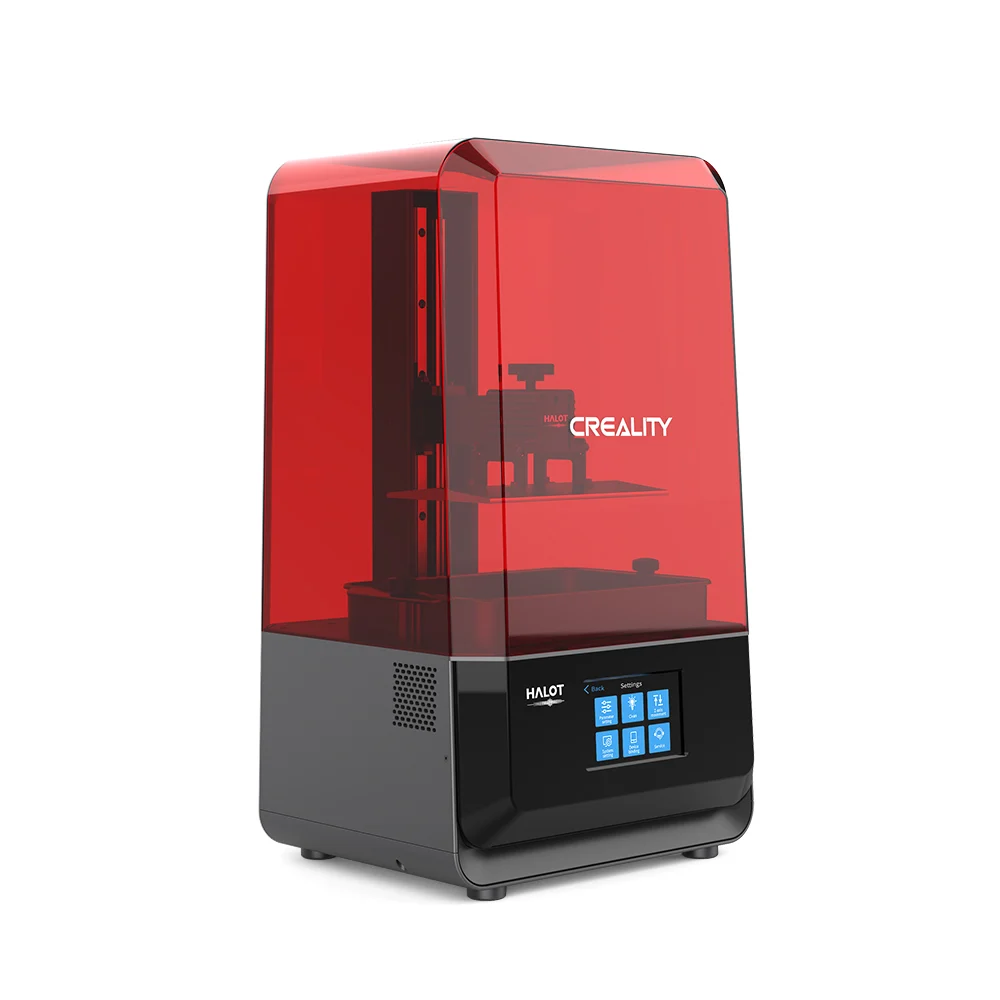Compare Halot Lite vs H2D
Comparison between the best 3D printers
Choose the best 3D printer at the best price. The cheapest 3D printers are here.
Buy a 3D printer here with 3D Fila.
 |
 |
|
| Model | Halot Lite |
H2D |
| Printing Material | Resin | Filament |
| Buy Resin for Creality 3D Halot Lite | Buy Filament forBambu Lab H2D | |
| Estimated price | $400,00 | $1899,00 |
| Manufacturer | Creality 3D | Bambu Lab |
| Release Year | 2021 | 2025 |
| Print Volume [mm] | 192x120x200 | 350x320x325 |
| Printer Size [mm] | 330x301x572 | 492x514x626 |
| Weight [kg] | 10,6 | 42,3 |
| Power Loss Recovery | NO | YES |
| Maximum Resolution [mm] | 0,01 | 0,01 |
| Processor | ||
| Display | Display touchscreen 5'' | Touchscreen 5'' |
| Power Supply | ||
| Connectivity | SD / USB | Wifi, Bambu bus, Cartão SD |
| Operating systems | Windows, Mac, Linux | Windows, Mac, Linux |
| Date of registration in the system | 2022-11-04 | 2025-03-31 |
| Release date | 2021 | 2025 |
| Extra features | Crealitys Halot Lite printer stands out in the mid-size resin 3D printing segment, with a build volume of 192 x 120 x 200 mm and 50 micron resolution. It offers a monochrome LCD for fast and durable printing, and an upgraded light source that ensures over 80% uniformity across the print bed. It includes Wi-Fi connectivity for remote control and updates, an ARM Cortex CPU for efficient performance, and is compatible with Halot Box and Lychee slicing software. It also has an activated carbon filter to reduce odors. | Bambu Labs H2D combines high-speed 3D printing with a chamber heated up to 65 °C, dual extrusion with automatic nozzle switching, an AMS for filament drying and exchange, and AI sensors that detect failures. It offers optional laser and digital cutting capabilities, features intelligent calibration through computer vision, vibration control, enhanced fire safety, and real-time camera monitoring. |
| Support for multiple colors and materials (AMS and CFS) | NO | YES |
Notes * |
||
| Cost-benefit | 8 / 10 | 7 / 10 |
| Hardware | 1.2 / 10 | 8 / 10 |
| Tela | . | . |
| Print volume | 3 / 10 | 4 / 10 |
| Performance | 9 / 10 | 5 / 10 |
Conclusion |
| In comparing the Creality 3D Halot Lite and the Bambu Lab H2D, it's essential to evaluate their respective features, pricing, performance, and overall value. The Halot Lite, released in 2021, is a cost-effective option primarily designed for resin printing. It excels in detail and resolution, which is crucial for intricate models, and has a lighter form factor, making it more suitable for home use or smaller workshops. Its value is evident in its good cost-to-feature ratio, with solid performance metrics and a variety of connectivity options. However, it lacks power loss recovery and multi-material capabilities. On the other hand, the H2D, set for release in 2025, offers advanced features more suited for professional settings. Its larger build volume, dual extrusion capabilities, and smart sensors elevate its performance and versatility. The printer’s heating capabilities and real-time monitoring enhance reliability, while its support for various materials and automatic filament management systems position it as a cutting-edge tool for serious 3D printing professionals. However, this high level of technology comes at a significantly higher price point. In conclusion, if budget is a primary concern and you seek impressive detail in a compact resin printer, the Halot Lite presents a compelling choice. Conversely, for those who prioritize cutting-edge technology, larger print capacities, and multi-material functionality, and are willing to invest more, the Bambu Lab H2D offers advanced capabilities that justify its higher cost. Ultimately, the decision will depend on your specific printing needs and how much you're willing to invest in your 3D printing endeavors. |

